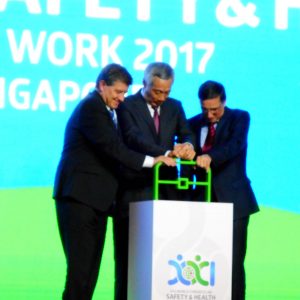
It has been noted that the recent World Congress on Safety And Health at Work had “Vision Zero” as one of its three themes. It was curious that the opening remarks of Singapore’s Prime Minister, Lee Hsien Loong (pictured right), did not mention Vision Zero at all. In fact he was quite measured in his speech which placed him in a better position to argue for real safety targets and initiatives.
In contrast to many business leaders, and some of the speakers at the World Congress, the Prime Minister stated that
“workplace accidents and injuries are almost always preventable.”

 In front of thousands of delegates and dignitaries, the 21st World Congress on Safety and Health was officially opened yesterday by the Singapore Prime Minister
In front of thousands of delegates and dignitaries, the 21st World Congress on Safety and Health was officially opened yesterday by the Singapore Prime Minister 


 In July 22 2014
In July 22 2014